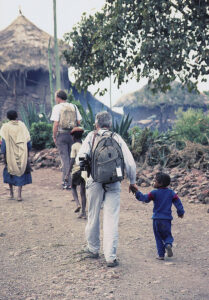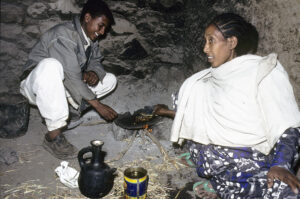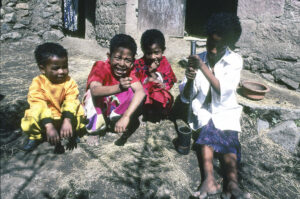Kaj Halberg - writer & photographer
Travels ‐ Landscapes ‐ Wildlife ‐ People
Ethiopia 1996: Timkat – a Christian festival
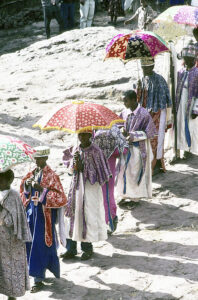
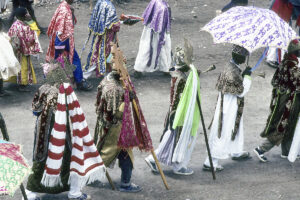
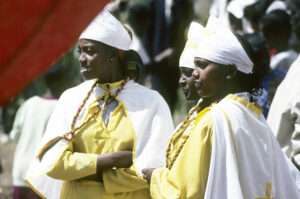
This group of churches also comprise the Eritrean Tewahedo Church, the Coptic Church of Alexandria, the Armenian Apostolic Church, the Syriac Orthodox Church, and the Malankara Church of India.
Until 1959, the Ethiopian Tewahedo Church was administered by the Coptic Church of Alexandria, but was then granted its own patriarch by Cyril VI, who, besides being Coptic Pope of Alexandria, was also Patriarch of all Africa.
Tewahedo means ‘unified’. Contrary to the belief of the Roman Catholic, the Greek Orthodox, the Russian Orthodox, the Anglican, the Lutheran, and most other Protestant Churches, that Christ has two natures, a divine and a human, the Tewahedo and other Oriental Orthodox Churches believe in one single unified Nature of Christ, meaning that a unification of the divine and human natures of Christ into one is essential to accomplish the divine salvation of humankind. (Source: en.wikipedia.org/wiki/Ethiopian_Orthodox_Tewahedo_Church)
The Tabot is a model of the Ark of the Covenant, the Biblical chest which, according to The Book of Exodus, contained the two tablets, on which The Ten Commandments were inscribed.
During one of the Timkat ceremonies, the Tabot is wrapped in an ornate cloth and carried in a procession of priests. It represents the manifestation of Jesus as the Messiah, when he approached John the Baptist to be baptized. Around 2 a.m., the Tabot is carried to a nearby stream or pool, where a ritual cleansing of it is performed. Later, water is sprinkled on the participants of the procession. Some also immerse themselves, thus symbolically renewing their baptismal vows.
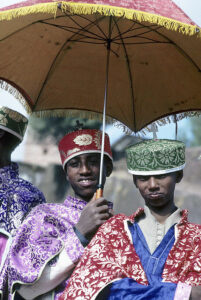
We then hurry towards the centre of town, as we have heard the beating of drums and a penetrating yelling, ”li-li-li-li”, the source of which, as it turns out, is a large group of women.
Numerous priests are gathered, all wearing silk and cotton garments down to their ankles. Many also carry colourful umbrellas as a protection against the fierce sunshine. Occasionally, fantastic rolls of drums can be heard from the centre of the group of priests, accompanied by the blowing of horns.
Thousands of villagers and white-clad pilgrims are gathered on the slopes along the main path, some with a yellow cross woven or sewed on to their back.
A long procession of priests now marches past, divided into sub-groups, one from each of the churches in Lalibela and its surroundings. At the rear end of each group, white-clad young priests are dancing and singing, accompanied by rolls of drums and fanfares from brass horns. The priests are followed by hundreds of pilgrims and spectators.
The procession comes to a halt in a large square, where one of the priests gives a ceremonious speech, lasting about half an hour. Several times, we hear the name Iohannis being mentioned, undoubtedly referring to John the Baptist, who, of course, plays a significant role in this festival.
Among the white-clad Ethiopian priests, we notice a few European priests, wearing black clothes, some sporting high ’hat-box’ hats – one even a bowler. When the speech is over, the crowds disperse.


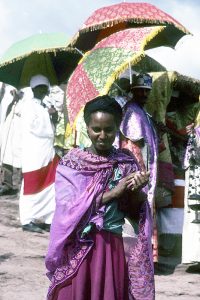
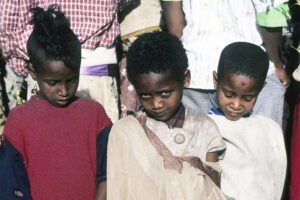
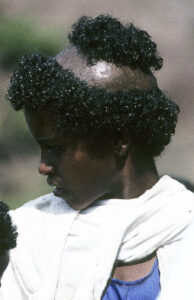


We seek shelter in the hotel lobby, from where we can study the bird life in the hotel garden, which includes speckled pigeon (Columba guinea), the endemic banded barbet (Lybius undatus), the strange speckled mousebird (Colius striatus), which climbs about in the bushes with incredible agility, and an Ethiopian thrush (Psophocichla simensis), searching for worms on the lawn, similar to the European blackbird (Turdus merula) back home.
A yellow-billed kite (Milvus aegyptius) is resting on barbwire near the hotel. This bird was formerly regarded as a subspecies of the widespread black kite (M. migrans). Other observed birds in the neighbourhood include fan-tailed raven (Corvus rhipidurus), Swainson’s sparrow (Passer swainsonii), and African citril (Crithagra citrinelloides).
Throughout the night, the festival continues with speeches and chanting. The noise is incredible, as the speeches are transmitted through numerous loudspeakers. Obviously, the priests are of the opinion that everybody should have the pleasure of listening to them. All night long, people come and go in the darkness.

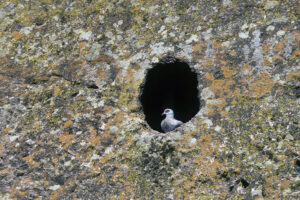

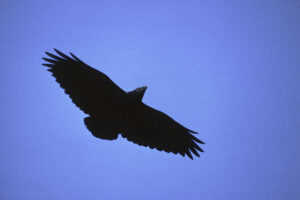
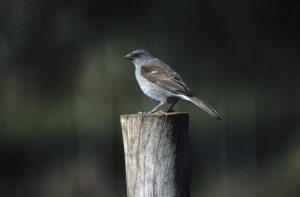
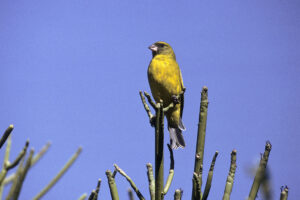
Many of these buildings are carved into the bedrock, which is soft, red, volcanic tuff. The most striking of the churches is Beit Giyorgis, carved down into the bedrock and shaped like a cross. It can only be entered by walking in an underground tunnel, or by using ladders, which are leaning against the sheer rock wall.
Accompanied by a young guide, we walk through a maze of narrow alleys and niches, connecting the stone churches. It is indeed a peculiar feeling to walk around in semi-darkness, deep down between these tall, ancient buildings.
Life here seems not to have changed since the churches were hewn out of the rocks. Some priests still live in small caves, which have been lined with sheep skins to keep the priests warm during the cold nights. One priest is sitting on a sheep skin in the sunshine, absorbed in reading holy scripts.
We pay a visit to some of the churches, where we are welcomed by their priests. The interior walls are decorated with carvings and murals. The churches contain a large number of archaic artefacts, including splendid crosses in gold and silver.
One of the murals depicts St. George, a Roman soldier, who was executed around 303 for his Christian belief. He since became the patron saint for farmers, knights, and horsemen. The name George is from the Greek georgos (‘farmer’). A famous legend relates that St. George killed a dragon, which held a princess captive.
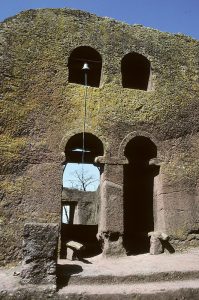
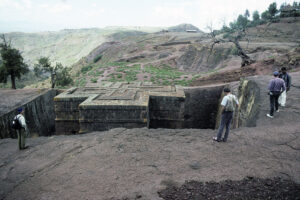
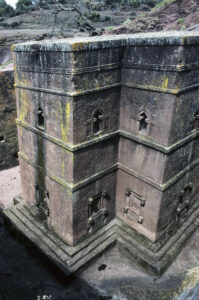
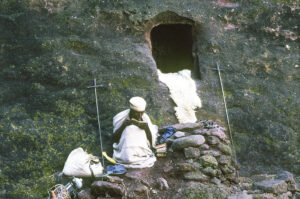
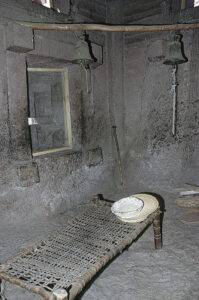

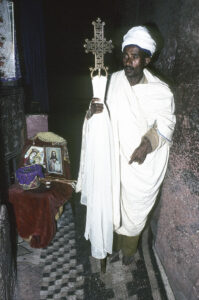
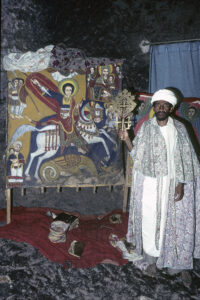
The processions of priests continue today, so we take our seats on a slope, from where we have a splendid view of the masses. The procession passes by just below, with plenty of drum rolls, horn-blowing, dancing and singing. People are happy and smiling: the annual cleansing of The Ark of the Covenant has taken place!
Late in the afternoon, we pay a visit to our guide’s home, a humble, circular hut like most other dwellings in Lalibela, with mud walls and a roof of corrugated iron. Two of his younger brothers receive us outside their home and accompany us the last bit of the way.
In the courtyard, his mother serves coffee for us, newly roasted, newly ground, and newly brewed – good, strong coffee! While we enjoy this delicious drink, we are surrounded by his six smaller siblings, who smile and laugh and point at the strange foreigners. We feel very welcome!
A perfect end to a perfect stay in Lalibela.
